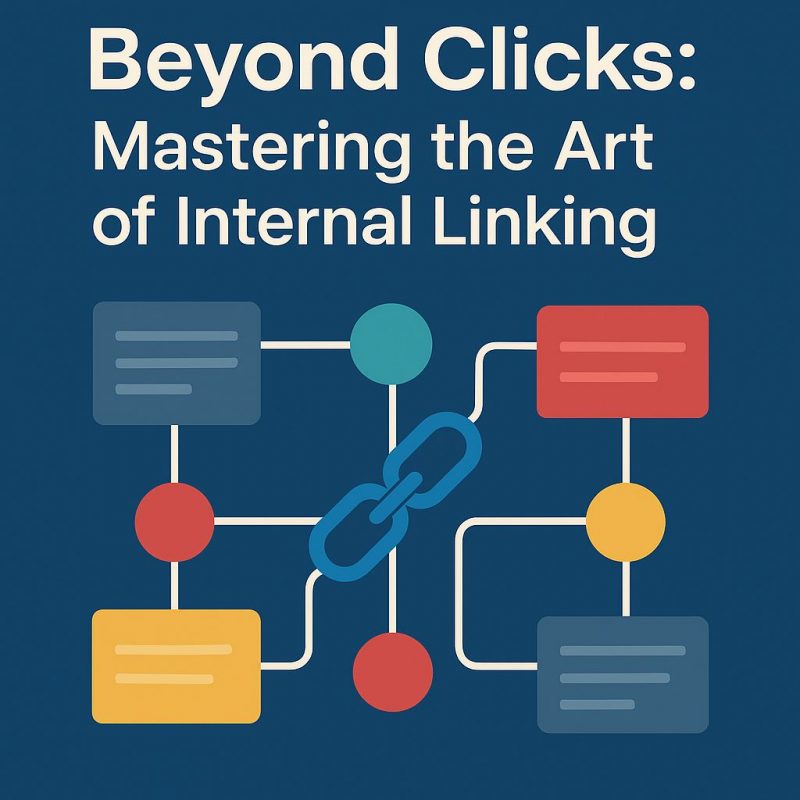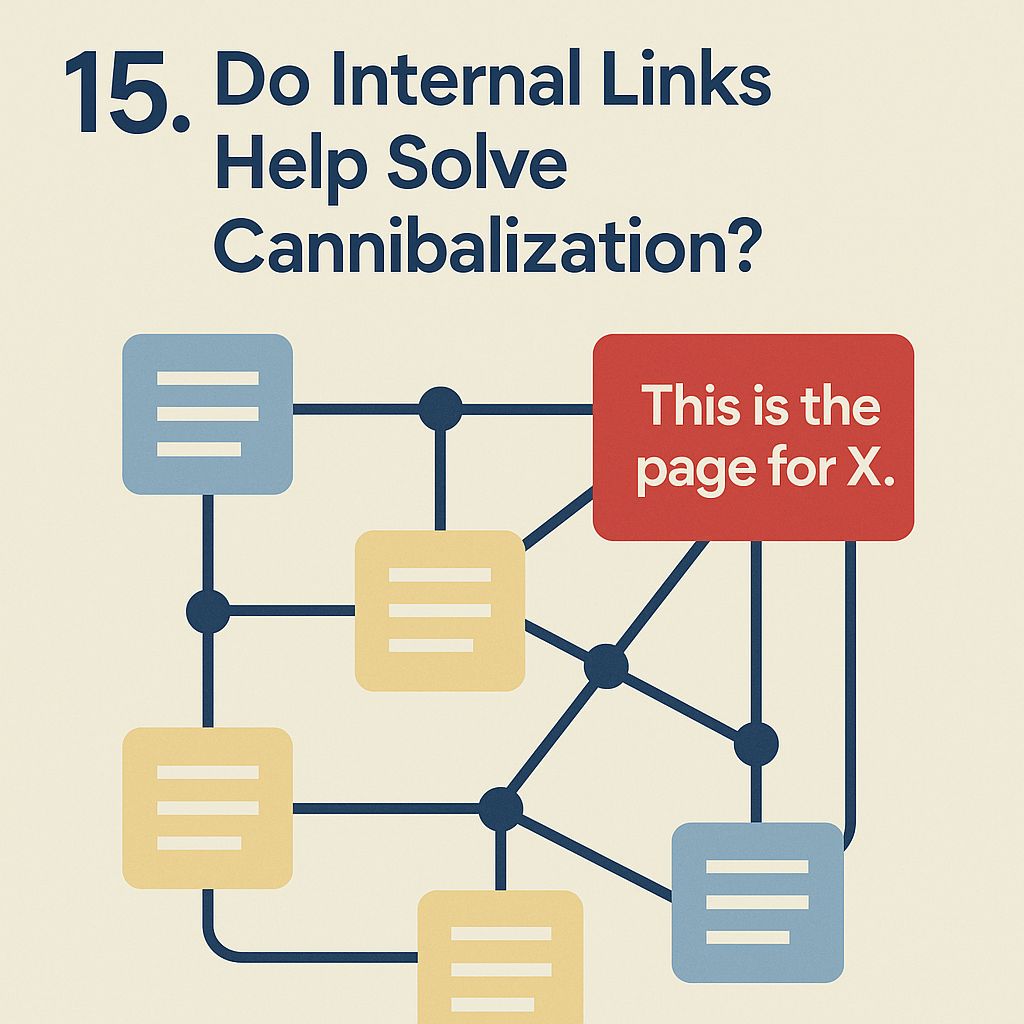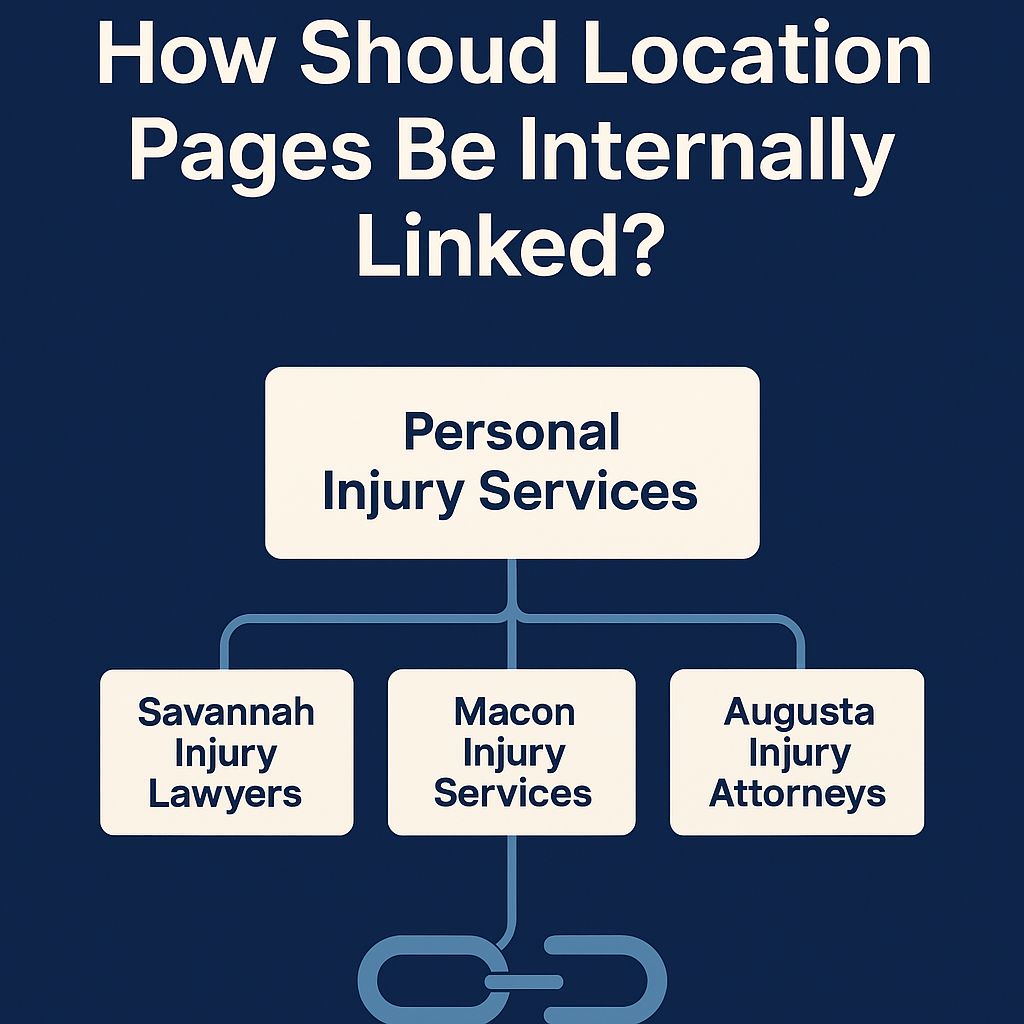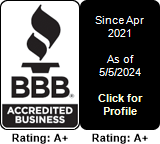Internal linking guides visitors seamlessly through your website, defining structure and subtly shaping meaning. While quality content matters greatly, internal links truly signal priority and context, helping both users and search engines navigate effortlessly. In this in-depth analysis, we’ve explored internal linking comprehensively through 99 detailed questions and answers, providing strategic insights into their power, placement, and purpose, ensuring your website is clear, cohesive, and ultimately effective.
1. What actually counts as an internal link?
Any link from one page on your site to another. But more than a path, it’s a signal; it shows search engines what matters, and what connects to what. Without it, pages float isolated.
2. With all the AI and NLP in Google’s core, do internal links still matter?
Now more than ever. Content speaks, but links organize the speech. AI still needs architecture; it understands language better when structure gives it shape. Structure grounds meaning.
3. How exactly does Google use internal links?
To crawl, to cluster, to calculate meaning. A strong internal link isn’t just a suggestion; it’s a vote and a roadmap at the same time. Links clarify context.
4. Can internal links influence a site’s perceived hierarchy without changing the URL structure?
Absolutely. A deep page repeatedly linked from key hubs begins to float; Google starts treating it like a central node, regardless of its directory depth. Hierarchy becomes fluid.
5. How do we balance internal links between evergreen pages and temporary ones?
Think of it like hydraulic pressure. Evergreen pages get continuous flow; seasonal ones get timed boosts. Then the links retract once the moment passes. Balance sustains value.
6. What’s the consequence of removing internal links from a page?
You slowly choke it off. Fewer crawls, less context, lower rankings. Links are how a page breathes inside your architecture. Loss of links equals loss of relevance.
7. Can we re-prioritize a site’s focus just by rewiring links?
Exactly. You don’t need to rename or relocate. You just change what you point to, and how often. It’s silent reprogramming. Subtle shifts reshape visibility.
8. Is there a risk of too many internal links?
Yes. Too many links dilute meaning; Google starts ignoring them. Every link must earn its place by making the experience or structure clearer. Overlinking weakens signals.
9. What separates good internal linking from random navigation?
Intent. Good internal links sculpt pathways. Random ones scatter signal. One builds flow, the other bleeds it. Intentionality drives coherence.
10. Can internal links be used to demote or quietly suppress a page?
Yes. Removing links is like dimming a light. Over time, Google stops paying attention unless someone else insists on looking. Silence equals suppression.
11. Do anchor texts matter more internally or externally?
Internally, they define context and user flow. Externally, they hint at reputation. Both matter; but inside, you’re teaching structure. Anchors internally set meaning.
12. How important is anchor diversity?
Crucial. Repeating “learn more” or “click here” tells Google nothing. Diverse, meaningful anchors reinforce the semantic map of your site. Diversity amplifies clarity.
13. Can internal links affect how Google understands intent clusters?
They’re a key part of it. Intent clusters form when content is contextually and structurally linked. Without links, content is just floating islands. Clusters rely on connections.
14. How do you prevent link loops from confusing the algorithm?
Use directionality. Think parent-to-child or topic-to-subtopic. If everything points to everything, the signal dissolves. Direction preserves clarity.
15. Do internal links help solve cannibalization?
Often. Redirect authority using anchor text and linking volume. Tell Google: “This is the page for X. The rest support it.” Clear signals reduce confusion.
16. Can internal links influence passage indexing?
They can highlight which passage matters. If you link to a subheading or fragment, it sends a micro-signal that this section solves something. Precision creates prominence.
17. What’s the ideal placement for internal links; top, middle, or bottom?
Top carries more algorithmic weight. But the best place is wherever it fits best contextually. Don’t front-load at the cost of clarity. Context matters most.
18. What role do internal links play in a pillar-cluster model?
They are the model. Pillars link out to clusters, clusters link back. It’s a controlled loop of topical reinforcement. Links bind structure.
19. Should internal links always be dofollow?
Yes; unless you’re intentionally breaking the equity flow. Noindex and nofollow confuse structure when used without purpose. Equity requires clarity.
20. Can internal linking impact snippet eligibility?
Yes. If you consistently link to concise answer sections, you increase their crawl frequency and highlight them as primary content. Linking boosts visibility.
21. What’s internal link decay?
It’s when once-important pages fall out of the link network as new content pushes them down. They go dark unless resurfaced. Decay erodes visibility.
22. How often should you audit your internal links?
Every 3–6 months on large sites. Internal linking is a living structure; it grows wild unless you guide it. Regular pruning preserves effectiveness.
23. How do internal links shape semantic clusters?
They define their borders. Linking related topics in a looped pattern tells Google: “This is one idea; surrounded by nuance.” Clusters emerge from clarity.
24. Can we link between clusters?
Yes; but only when the overlap is real. Clusters must have integrity. Bridges work only if anchored in truth. Genuine connections matter.
25. Should internal links reflect search intent or site structure?
Ideally both. Intent gives the “why,” structure gives the “how.” Ignoring one creates hollow or confusing links. Both layers count.
26. Can you control crawl behavior with internal links?
To a surprising degree. Links tell bots where to go, how often, and how deep. You’re training them, not just feeding them. Control shapes indexing.
27. How do we stop crawl waste on massive content sites?
Segment ruthlessly. Link equity should move through highways, not alleyways. Use hubs, silos, tiered access. Efficiency prevents waste.
28. Should we ever link paginated content?
Only if it matters. Page 2 of a listicle? Probably not. Page 4 of a legal process series? Definitely. Relevance decides worth.
29. Can internal links help Google prioritize what to index?
Yes. Frequently linked pages get crawled more, indexed faster, and often deeper. Unlinked pages feel invisible. Priority equals visibility.
30. What happens when every page links to every other page?
Entropy. Structure flattens. Signals bleed. Google sees chaos and ranks accordingly. Overlinking creates noise.
31. How do you balance depth and discoverability?
Deep content can win if you build clear, intentional paths to it. It must be earned, not dumped. Depth requires care.
32. Can internal links help control crawl frequency?
Yes. More links mean higher crawl frequency. Fewer links signal low priority. Frequency follows linking.
33. Do nofollow links inside your site mean anything?
They signal mistrust. Internally, that’s rarely useful. If a page isn’t trustworthy, it probably shouldn’t exist. Trust guides linking.
34. What’s the crawl-first priority page on most sites?
Homepage, then top navigation, then hubs. Links from hot pages carry more weight. Priority flows downwards.
35. What about internal links from expired content?
They leak equity if still live. Redirect, relink, or decommission them. Broken paths weaken the map. Maintenance preserves equity.
36. How should we treat seasonal content from past years?
Link to new versions. Use old pages for context or redirect softly. Update cycles maintain freshness.
37. Can internal links enhance content freshness?
Yes, by association. Linking to older pages from new content revives their perceived relevance. Links refresh content.
38. How does link distance affect indexing?
Every click from the homepage adds friction. Three clicks deep is fine; seven needs justification. Distance impacts visibility.
39. Should internal links point up or down the hierarchy?
Both. Upward reinforces authority, downward builds detail, lateral connects context. Use all three. Direction balances authority.
40. How does anchor position affect weight?
Early anchors, especially above-the-fold, have more impact. Context matters more than position. Placement shapes meaning.
41. Can internal links be weighted by source authority?
Yes. A homepage link isn’t equal to a two-year-old blog post link. Authority boosts strength.
42. Is too much internal linking a spam risk?
Only if manipulative. If logical and user-focused, it’s strategic. Intention defines legitimacy.
43. Can links ever be completely ignored?
Yes. Overused templates, repetitive anchors, chaotic loops; Google skips them as white noise. Quality ensures attention.
44. How do we future-proof internal links?
Keep them readable, logical, and anchored in timeless concepts, not fleeting trends. Stability preserves relevance.
45. In healthcare, how do we avoid cannibalizing condition-based pages?
Use phase-based linking. Link symptom to diagnosis to treatment to specialist, showing the patient’s journey clearly rather than repeatedly linking the same terms. Clarity prevents overlap.
46. How do we handle FAQ overload in health content?
Centralize FAQs and selectively link out. Don’t overload individual pages; allow answers to breathe. Balance creates clarity.
47. What if two specialties treat the same condition?
Link the condition page distinctly to each specialty with clear contextual differences, one from a surgical perspective and one therapeutic. Differentiation reduces confusion.
48. What if location variants exist for each service?
Canonicalize one main page, link to it, and let location pages serve local search intent without keyword competition. Hierarchy resolves duplication.
49. How should law firms segment criminal defense vs. personal injury content?
Use logical separation: criminal defense by case type (e.g., DUI to court process), personal injury by event (e.g., car accident to liability to damages). Don’t mix methods. Clear paths build trust.
50. How should multi-state law firms handle linking when laws differ by state?
Build state-specific silos and link within them unless overlapping laws exist. Preserve jurisdictional integrity. Context maintains accuracy.
51. Can we link federal and state law pages?
Yes, but clearly mark boundaries with distinct anchor texts reflecting jurisdiction differences. Explicitness prevents misunderstanding.
52. In e-commerce, how do we avoid linking to every filter page?
Link only to meaningful, indexable filter combinations. Avoid recreating the entire filter tree in links. Precision prevents waste.
53. Can product pages link to each other?
Yes, if contextually helpful, such as “Pairs well with” or “Frequently bought together.” Utility increases conversions.
54. What about product review pages?
Only link if they significantly add value or context. Don’t link casually to hidden testimonials. Relevance enhances trust.
55. How do we handle seasonality in e-commerce?
Seasonally link relevant pages, and remove links when the season ends. Redirect or remove obsolete campaign pages. Timing manages equity.
56. In SaaS, should we link features to industries?
Only if the industry has distinct usage. Otherwise, link features to use cases to personas for clear vertical logic. Structure supports clarity.
57. How should multiple pricing tiers be internally linked?
Link upwards progressively (Basic to Pro to Enterprise) but avoid downward linking to maintain aspiration. Direction fosters upgrades.
58. How do we handle deprecated features in SaaS?
Remove links to outdated features, archive content if necessary, and maintain a current internal linking environment. Clean structure sustains credibility.
59. Can knowledge base content rank through internal linking alone?
Yes, if it’s highly interlinked and addresses genuine user queries effectively. Interconnection boosts discoverability.
60. Can we link to gated assets?
Only with clear context. Avoid linking directly to gated resources without proper explanation. Transparency maintains trust.
61. Should SaaS use-case pages interlink?
Only when use cases truly overlap. Avoid forced or artificial connections. Authenticity defines relevance.
62. What’s the biggest internal linking mistake in SaaS?
Treating all features equally. Link strategically by importance, utility, and conversion potential. Prioritization shapes outcomes.
63. Can blogs internally link to product pages effectively?
Yes, but ensure a logical flow: problem to solution to feature to product. Guide users progressively, not abruptly. Progression boosts engagement.
64. How should navigation links be prioritized in SaaS sites?
Prioritize by customer journey stages. Pre-signup pages like Solutions and Pricing should differ from post-signup content like Resources and Docs. Relevance supports navigation.
65. Should internal links point to testimonial pages?
Yes, selectively. Include them primarily in consideration-stage content rather than introductory pages. Placement influences conversion.
66. How does link equity shift during SaaS growth?
New features naturally attract links, while older documentation loses equity. Manual rebalancing is crucial to prevent decay. Maintenance preserves balance.
67. In local SEO, how should location pages be internally linked?
Contextually from service pages. Link within narrative content, not just footer links, to enhance relevance. Integration supports locality.
68. Should location pages link to each other?
Only if there’s genuine user intent, like comparing locations. Otherwise, maintain distinct local relevance. Purpose determines linking.
69. Should location pages link to blogs?
Yes, particularly hyperlocal content such as neighborhood guides or success stories that validate local presence. Context enriches locality.
70. How do we avoid internal linking loops in multi-location service pages?
Establish a primary authoritative page for a topic; others should clearly support without competing. Hierarchy prevents confusion.
71. How should internal links be structured in educational platforms?
Follow a clear hierarchy: course to module to lesson, cross-linking only when concepts naturally overlap. Logical flow guides learning.
72. Should instructor bios be linked internally?
Yes, linking between instructor bios and courses amplifies authority, expertise, and trustworthiness. Personalization builds trust.
73. Can internal links simulate an educational curriculum?
Absolutely. Progressively link beginner to intermediate to advanced content, mirroring natural learning sequences. Flow enhances comprehension.
74. Do glossary pages help educational sites?
Yes, if terms are linked intentionally and contextually rather than excessively. Clarity boosts understanding.
75. What’s the most common internal linking mistake in education?
Indiscriminate linking of all content, creating cognitive overload rather than structured learning paths. Order supports learning.
76. Can internal links support test-prep segmentation?
Yes, by clearly segmenting content based on score ranges, exam sections, or learner anxiety levels. Structure facilitates targeting.
77. Could internal links one day act as reasoning chains for AI?
Potentially. Links could express logical sequences, dependencies, and reasoning, becoming more than navigation. Links might teach logic.
78. Can a site’s internal linking reflect its worldview?
Absolutely. Sparse linking suggests minimalism; abundant links indicate complexity and abundance. Structure inherently reflects philosophy. Links reveal perspective.
79. Could a self-replicating internal link system be created?
In theory, yes. A feedback-driven system could autonomously evolve its structure, though control would shift from strategy to evolution. Autonomy changes strategy.
80. Can internal links express emotion or tone?
Not directly, but placement and context can convey rhythm and emphasis, indirectly shaping emotional perception. Links subtly influence mood.
81. If Google mistrusts your links, do they still matter?
They matter to users. User trust can eventually restore algorithmic trust. Links serve both human and crawler purposes. User experience guides trust.
82. Could internal linking deliberately obscure meaning?
Yes, overly complex structures can intentionally conceal or obfuscate the core message, hiding intent beneath layers of detail. Complexity can cloud clarity.
83. Do internal links mimic how memory functions?
Yes, both rely on relational associations rather than linear navigation. Strong links, like memories, form powerful associations. Associations strengthen recall.
84. What if all internal links were removed from a site?
The site would become a static archive, losing vitality, context, and navigational coherence. Links sustain life within sites.
85. What if a site had only internal links but no content?
It would be a hollow skeleton, providing structure without substance, a meaningless map. Content gives links purpose.
86. Do internal links age or degrade?
Yes, they become stale without context updates. They must be maintained or revitalized periodically. Regular renewal prevents obsolescence.
87. Can internal links provoke curiosity?
Yes, unexpected or creative linking can stimulate curiosity by connecting unconventional points. Curiosity enhances engagement.
88. Why do internal links matter more deeply than we realize?
They shape user journeys, meanings, and site narratives. Links reflect relationships and create pathways for understanding. Paths create meaning.
89. Could internal links serve as AI training signals for human logic?
Possibly. Links that mirror reasoning steps might teach AI models about logical human thinking. Links could instruct AI.
90. What happens if internal linking contradicts user behavior?
User behavior eventually wins, revealing authentic intent over intended architecture. Reality corrects assumptions.
91. Could internal linking replace traditional content hierarchy?
It already is. Dynamic internal linking reflects user movement, superseding static hierarchical structures. Movement defines relevance.
92. Is there a “semantic fatigue” from overly optimized internal links?
Yes, excessive perfect optimization can render signals invisible, losing natural human variance. Imperfection maintains visibility.
93. What’s the philosophical limit of linking?
When links serve rules rather than genuine relevance, meaning collapses into structural noise. Authenticity prevents breakdown.
94. Do internal links resemble neural pathways?
Yes, both operate through associative rather than linear connections, strengthening with repeated use. Reinforcement builds understanding.
95. Can perfect internal linking create inherent biases?
Absolutely. Link structure inherently emphasizes certain content and suppresses others, reflecting editorial intent. Structure implies preference.
96. If a link isn’t clicked, does it still convey meaning?
Yes, it informs crawlers and subtly shapes user perception. Silence in interaction still impacts architectural meaning. Passive influence matters.
97. Can internal linking create illusions of completeness?
Yes, tightly looped content can feel comprehensive despite gaps, creating a deceptive sense of completeness. Loops conceal absence.
98. Which is more powerful: forward-moving or looping internal links?
Both matter: forward links signal progress, looping links build coherence and memory. Balance creates depth.
99. If all internal links vanished, what would truly be lost?
Relationships, emotional context, navigational clarity, and meaningful user journeys. A site without links loses its living essence. Links hold sites together.
Your Internal Links Shape Your Success—Let’s Get Strategic.
Every link on your site either builds or breaks your visibility. At Southern Digital Consulting, we fine-tune your internal linking strategy so visitors stay longer, Google ranks you higher, and your content achieves maximum impact. Ready to turn internal structure into growth? Let’s talk strategy.







